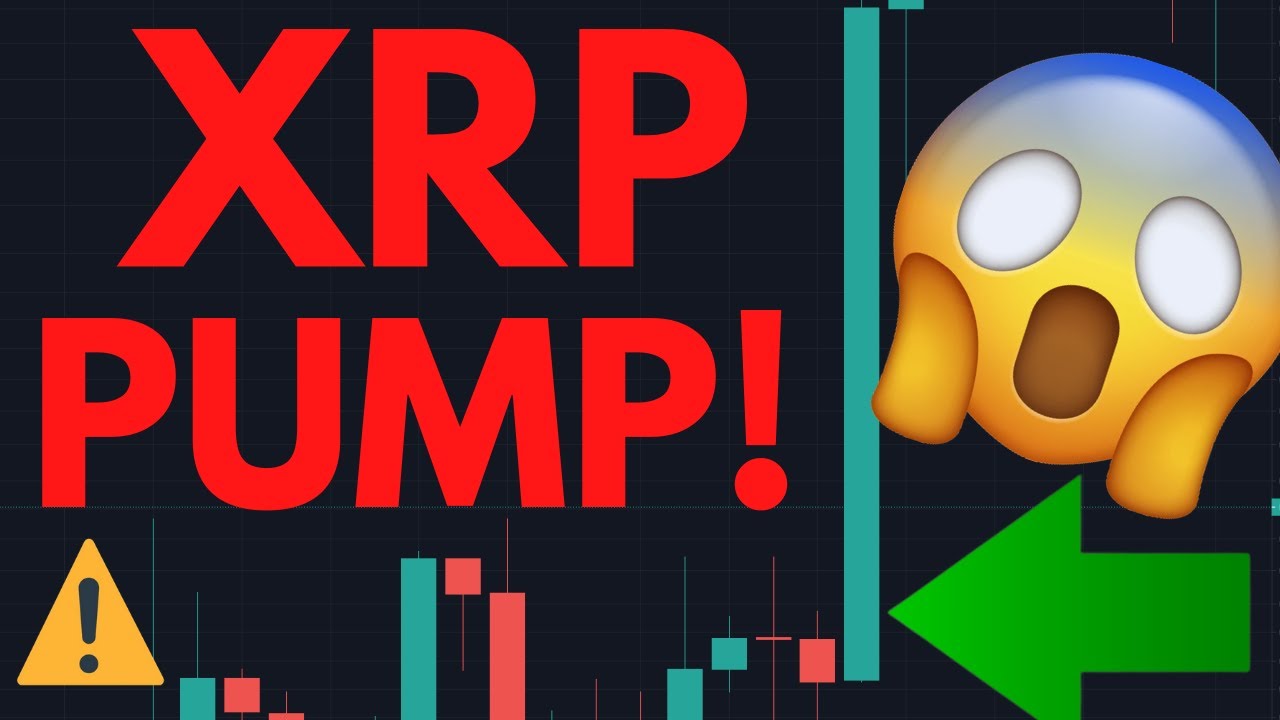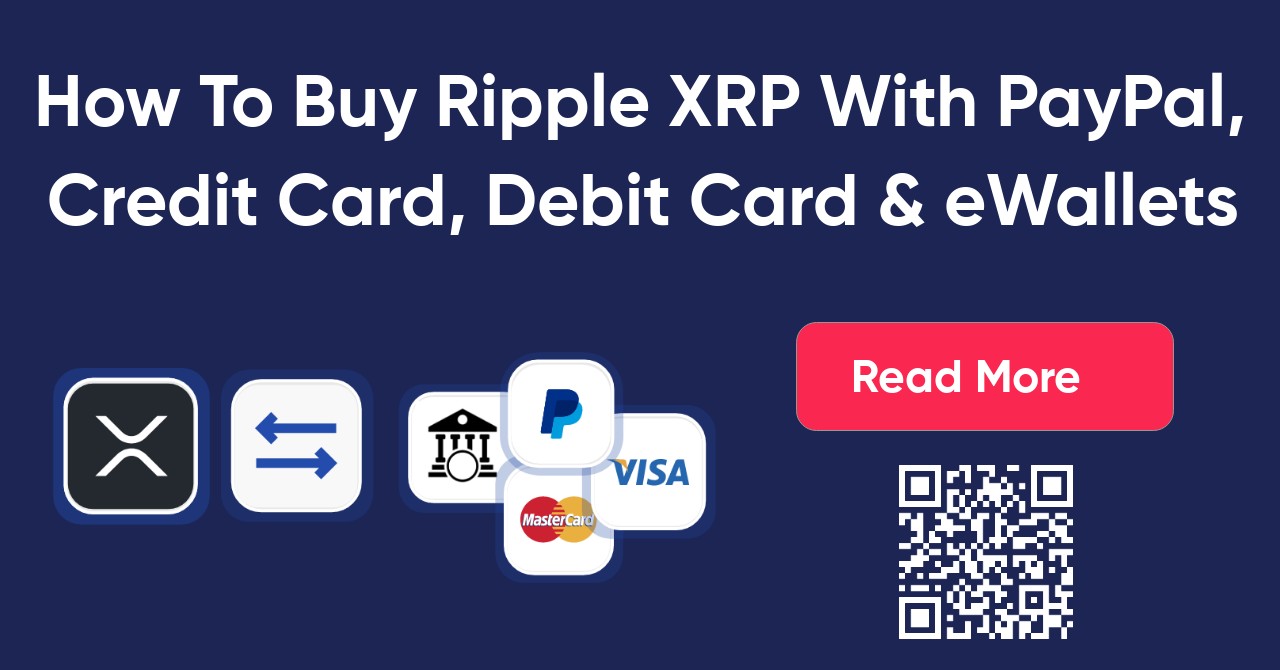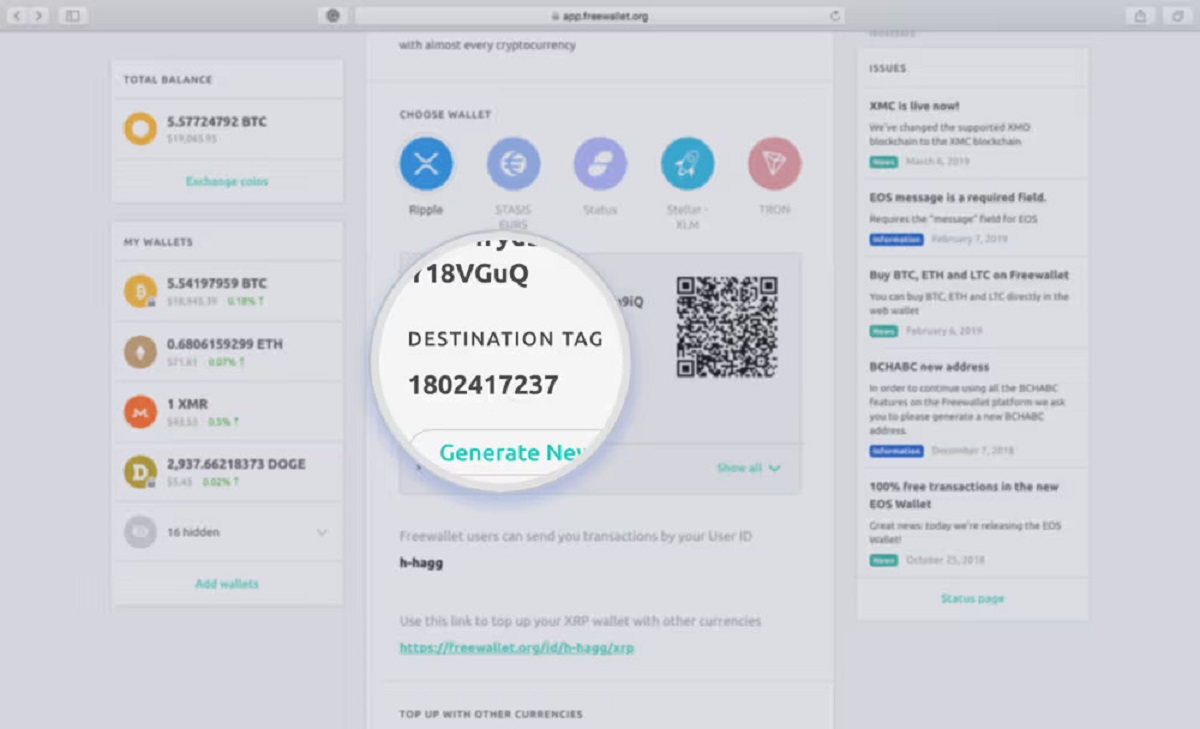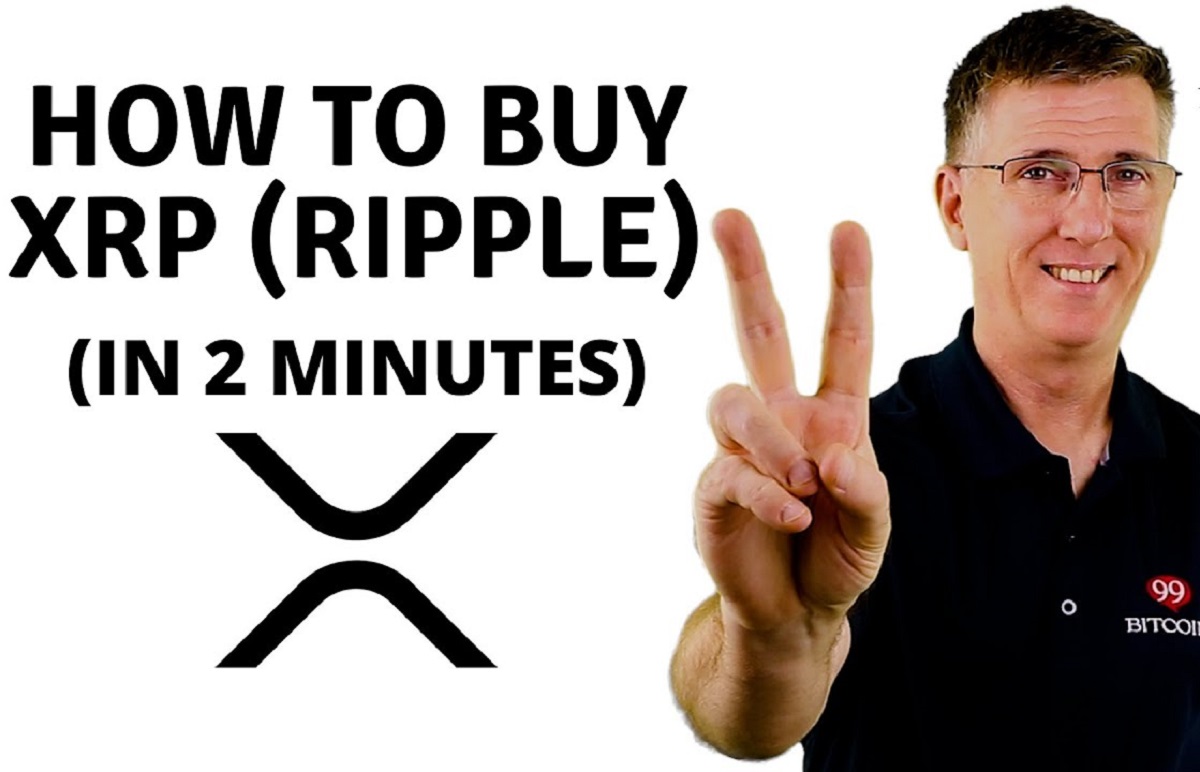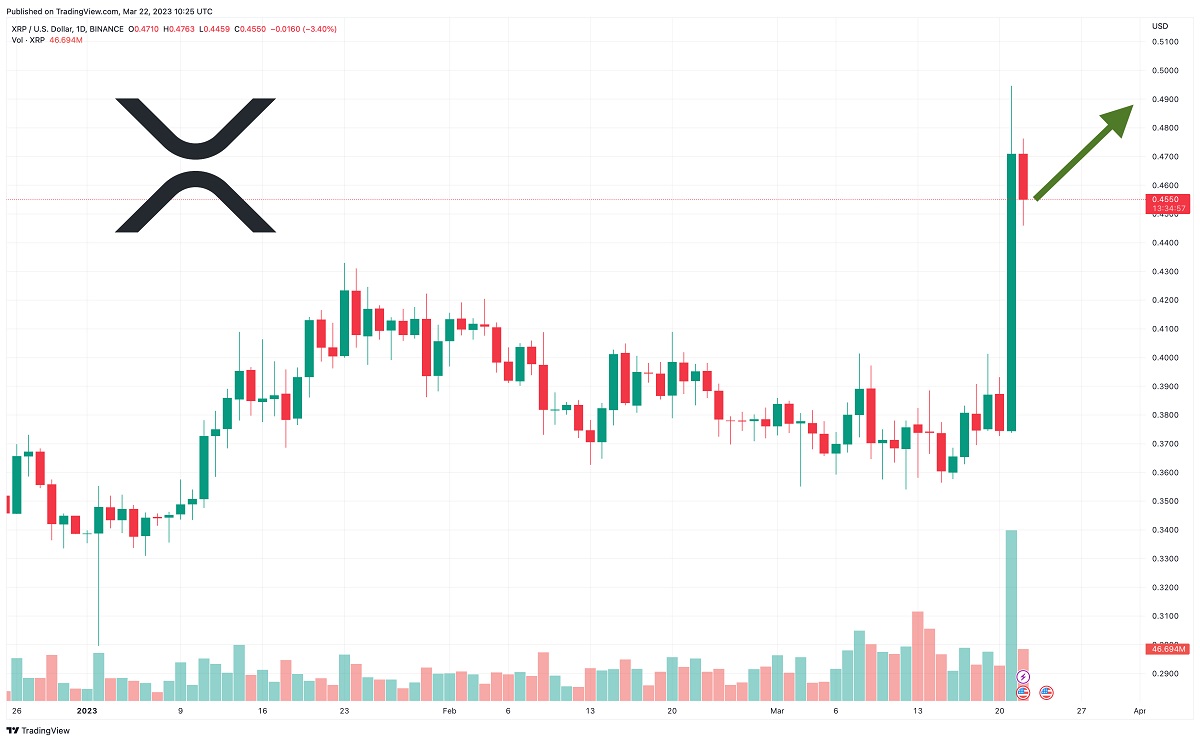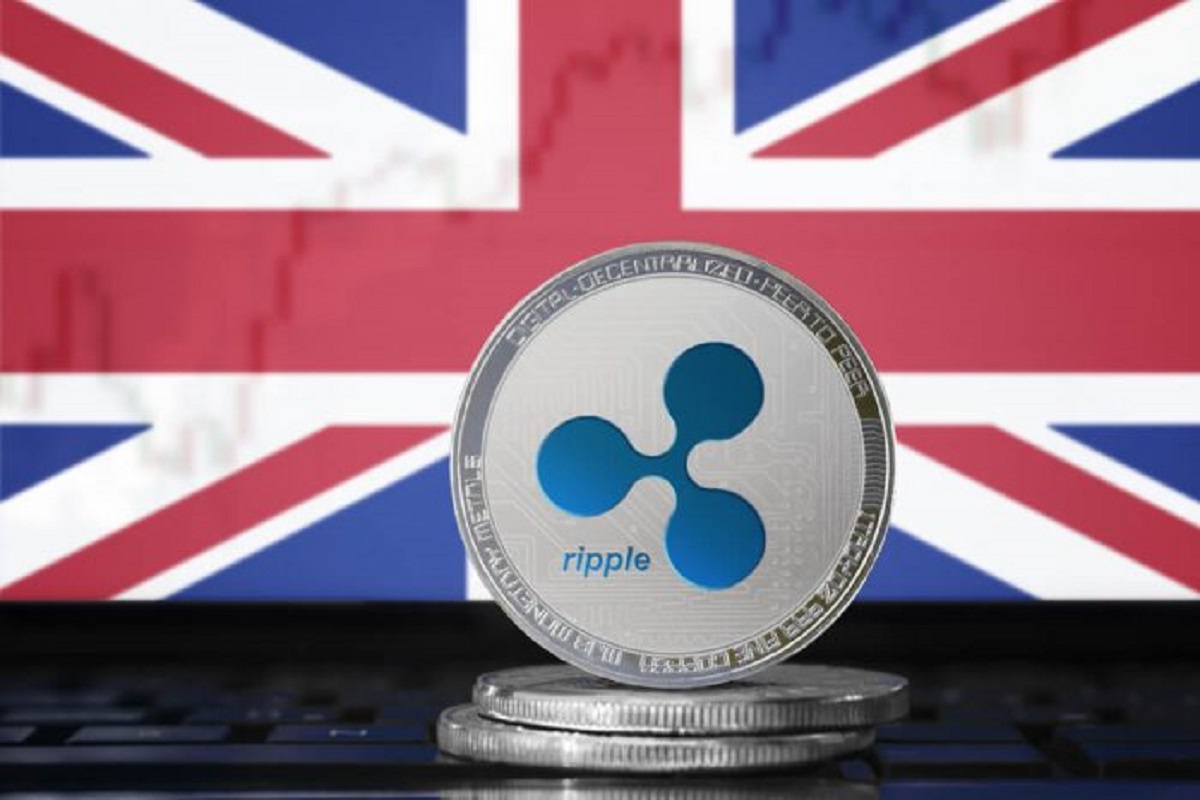Introduction
The recent surge in the price of XRP, the digital currency created by Ripple, has caught the attention of both cryptocurrency enthusiasts and mainstream media. XRP, which has long been overshadowed by Bitcoin and Ethereum, has suddenly gained momentum and is experiencing significant price appreciation. This phenomenon has left many wondering why XRP is pumping and what factors are driving its sudden popularity.
Before delving into the reasons behind XRP’s surge, it is essential to understand the underlying technology and ecosystem that Ripple has built. Ripple is a fintech company that has developed a global payments network, known as the RippleNet, which aims to facilitate fast, low-cost cross-border transactions. XRP serves as the native digital currency of the Ripple Network and plays a crucial role in its operations.
One of the key reasons for the recent pump in XRP is the increasing adoption of Ripple’s technology by financial institutions. Through partnerships and collaborations, Ripple has successfully onboarded numerous banks and payment providers onto its network. These institutions are attracted to the efficiency and cost savings offered by Ripple’s technology, which in turn drives the demand for XRP.
Regulatory clarity has also played a significant role in the surge of XRP. Unlike some other cryptocurrencies, XRP has managed to navigate the regulatory landscape relatively smoothly. Ripple has been proactive in working with regulators to ensure compliance, which has created a sense of trust and credibility among potential investors and institutions.
Furthermore, the utility and use cases of XRP have contributed to its increasing popularity. XRP offers fast and efficient settlement of transactions, making it an attractive option for cross-border remittances. Additionally, Ripple has expanded its services to include products like On-Demand Liquidity (ODL), which enables the use of XRP as a bridge currency to facilitate instant money transfers.
Institutional and retail investor interest has also fueled the pump in XRP. As more traditional financial institutions recognize the potential of cryptocurrencies, they are allocating resources to crypto investments. This institutional interest brings credibility to XRP and has led to increased demand from retail investors looking to capitalize on the growing market.
Finally, market speculation has undoubtedly played a role in the recent price surge of XRP. The volatility and potential for significant gains in the cryptocurrency market attract speculative investors, who anticipate future price increases and aim to profit from short-term trading strategies.
In summary, the recent pump in XRP can be attributed to a combination of factors. The adoption of Ripple’s technology by financial institutions, partnerships and collaborations, regulatory clarity, the utility of XRP, institutional and retail investor interest, and market speculation have all contributed to the surge in XRP’s price. As the cryptocurrency market continues to evolve, it will be fascinating to see how XRP’s story unfolds and how it stands out in the ever-growing digital asset landscape.
The Ripple Network
The Ripple Network, developed by Ripple, is a global payments network that aims to revolutionize cross-border transactions. Built on blockchain technology, RippleNet offers fast, secure, and cost-effective settlement solutions for financial institutions and businesses worldwide.
One of the key features of the Ripple Network is its ability to enable real-time gross settlement (RTGS) and currency exchange on a global scale. Unlike traditional systems, which rely on intermediaries and can take days to process transactions, RippleNet facilitates near-instantaneous transfers of funds, eliminating delays and reducing costs.
RippleNet operates on a decentralized ledger, which ensures transparency, security, and immutability of transactions. Transactions on the Ripple Network are validated by a consensus protocol, with participating nodes reaching a consensus on the validity and order of transactions. This decentralized and distributed validation process ensures the integrity and reliability of the network.
Another crucial aspect of the Ripple Network is its use of what is known as XRP, the native digital currency of the network. XRP serves as a bridge currency in transactions, allowing for the seamless transfer of value between different fiat currencies. This eliminates the need for multiple intermediary conversions and reduces both costs and settlement times.
Additionally, RippleNet offers a range of products and services to cater to the unique needs of financial institutions. One such service is On-Demand Liquidity (ODL), formerly known as xRapid, which leverages XRP to provide instant liquidity for cross-border payments. ODL allows financial institutions to free up capital and significantly reduce liquidity costs by utilizing XRP as a bridge currency in transactions.
The Ripple Network has gained significant traction among financial institutions, with over 300 customers worldwide, including banks, payment providers, and remittance companies. These institutions are attracted to the speed, efficiency, and cost savings offered by RippleNet, as well as the seamless integration with their existing systems.
Furthermore, Ripple actively engages in partnerships and collaborations to expand the reach and adoption of its technology. By collaborating with established players in the financial industry, Ripple not only enhances the credibility of its network but also accelerates the pace of innovation and mainstream adoption of blockchain technology.
In summary, the Ripple Network has transformed cross-border payments by offering a fast, secure, and cost-effective solution. With its decentralized ledger, real-time settlement capabilities, use of XRP as a bridge currency, and diverse range of products and services, the Ripple Network is poised to disrupt traditional financial systems and reshape the way we transact globally.
XRP Adoption by Financial Institutions
One of the key factors contributing to the recent surge in XRP’s popularity is the increasing adoption of Ripple’s technology by financial institutions. Ripple has successfully onboarded numerous banks, payment providers, and financial institutions onto its network, driving the demand for XRP as a digital asset.
Financial institutions are attracted to Ripple’s technology for several reasons. Firstly, RippleNet offers a more efficient and cost-effective solution for cross-border transactions. Traditional systems often involve multiple intermediaries, resulting in delays and high transaction fees. Ripple’s technology eliminates the need for intermediaries by utilizing blockchain and digital assets to facilitate near-instantaneous transfers with lower costs.
Secondly, Ripple’s technology provides increased liquidity for financial institutions. Through the use of XRP as a bridge currency, RippleNet allows institutions to access liquidity in real-time. This is particularly beneficial for institutions operating in emerging markets or regions with limited access to traditional banking systems.
Moreover, Ripple’s partnerships with established financial institutions provide a level of credibility and trust that further encourages adoption. By collaborating with banks and payment providers, Ripple demonstrates the viability and potential of its technology to revolutionize cross-border payments on a large scale.
One notable example of XRP adoption by financial institutions is the partnership between Ripple and MoneyGram. MoneyGram, one of the world’s largest money transfer companies, utilizes Ripple’s technology and XRP to enhance its cross-border payment capabilities. This partnership has not only provided MoneyGram with a competitive advantage in terms of speed and cost-efficiency but has also showcased the value of XRP as a bridge currency.
In addition to MoneyGram, Ripple has established partnerships with other prominent financial institutions, including Santander, Standard Chartered, and American Express. These collaborations demonstrate the growing interest and recognition of Ripple’s technology by established players in the financial industry.
Furthermore, Ripple actively engages with regulators and works towards ensuring compliance with financial regulations. This proactive approach has contributed to the positive perception and acceptance of Ripple’s technology by financial institutions and regulatory authorities. The regulatory clarity surrounding XRP is a significant factor that encourages adoption by financial institutions, as it provides a sense of security and legal compliance.
In summary, the increasing adoption of Ripple’s technology by financial institutions is a driving force behind the surge in popularity of XRP. The efficiency, cost-effectiveness, increased liquidity, and credibility provided by RippleNet have attracted financial institutions to embrace XRP as a digital asset. As more institutions recognize the potential of Ripple’s technology, the demand for XRP is expected to continue growing.
Partnerships and Collaborations
Partnerships and collaborations play a crucial role in the success of any blockchain project, and Ripple is no exception. Ripple has actively pursued strategic partnerships with various companies and institutions, which has significantly contributed to the growth and adoption of XRP as a digital asset.
Ripple’s partnerships span across different sectors, including banking, remittances, and payment processing. By collaborating with established players, Ripple expands the reach of its technology and demonstrates its potential to transform the way financial transactions are conducted.
One of the most notable collaborations for Ripple is its partnership with MoneyGram, a leading global money transfer company. Through this partnership, MoneyGram leverages Ripple’s technology and utilizes XRP as a bridge currency to facilitate faster and more cost-efficient cross-border transactions. This collaboration has not only showcased the benefits of Ripple’s technology but has also provided a real-world use case for XRP adoption.
Ripple has also formed partnerships with major financial institutions, such as Santander and Standard Chartered. These collaborations have allowed these institutions to explore the potential of Ripple’s technology for improving their cross-border payment processes. By working alongside established and reputable banks, Ripple gains credibility and attracts the interest of other financial institutions.
Furthermore, Ripple’s collaborations extend beyond financial institutions. The company has partnered with various blockchain and cryptocurrency firms to explore innovative solutions and interoperability between different networks. For example, Ripple partnered with R3, a blockchain technology company, to develop solutions that enable seamless integration of Ripple’s technology with existing financial systems.
In addition to partnerships, Ripple actively engages with regulatory authorities to ensure compliance with financial regulations. The company understands the importance of regulatory clarity in the crypto space and works towards building trust and credibility among regulators. This commitment to regulatory compliance has led to successful collaborations with governmental bodies and regulatory agencies, further solidifying Ripple’s position in the industry.
These partnerships and collaborations not only bolster Ripple’s reputation but also drive the adoption of XRP as a digital asset. They demonstrate the confidence and trust that industry leaders place in Ripple’s technology and emphasize the potential for widespread use of XRP in various financial applications.
In summary, Ripple’s strategic partnerships and collaborations have played a pivotal role in the growth and adoption of XRP. By collaborating with major financial institutions, money transfer companies, and blockchain firms, Ripple expands the reach and credibility of its technology. These partnerships not only provide real-world use cases for XRP but also highlight the versatility and potential of Ripple’s technology in transforming the world of finance.
Regulatory Clarity
One of the key factors contributing to the growing popularity of XRP is the regulatory clarity surrounding Ripple and its digital asset. While the cryptocurrency market is still relatively nascent and faces various regulatory challenges, Ripple has managed to navigate the regulatory landscape relatively smoothly.
Ripple has been proactive in engaging with regulatory authorities and working towards ensuring compliance with financial regulations. The company understands the importance of regulatory clarity in the crypto space and actively seeks to address any regulatory concerns.
One of the significant advantages that Ripple has over some other cryptocurrencies is its focus on working with financial institutions and collaborating with established players in the industry. This approach has allowed Ripple to build relationships with regulatory bodies and demonstrate its commitment to fulfilling regulatory requirements.
By partnering with banks and payment providers, Ripple showcases that its technology is not designed to replace the existing financial infrastructure, but rather to enhance it. This collaborative approach helps alleviate concerns from regulatory authorities who may view cryptocurrencies as a threat to financial stability.
Ripple’s commitment to compliance is also reflected in its adherence to know-your-customer (KYC) and anti-money laundering (AML) regulations. The company implements robust KYC and AML procedures, which include verifying the identity of its customers and ensuring the integrity of transactions conducted on its network.
Furthermore, Ripple actively engages with regulatory authorities to provide clarity on its operations and seek guidance on compliance matters. By maintaining open lines of communication and transparency, Ripple aims to foster trust and understanding among regulators regarding its technology and the role of XRP within the Ripple ecosystem.
The clarity provided by regulatory authorities regarding the classification of XRP has been another significant factor in its growing popularity. Unlike some other cryptocurrencies, which are still subject to uncertain regulatory status, XRP has been deemed as a digital asset with utility by several regulatory bodies.
For example, in the United States, the Securities and Exchange Commission (SEC) has stated that Bitcoin and Ethereum are not considered securities. While the SEC has not provided the same clarification for XRP, Ripple asserts that XRP is not a security and operates as a separate digital asset within the Ripple Network.
This regulatory clarity provides confidence to financial institutions, investors, and users who are considering adopting and utilizing XRP. With a clear regulatory status, XRP is more likely to receive broader acceptance and adoption in the financial industry.
In summary, the regulatory clarity surrounding Ripple and XRP has been a significant driving force behind the growing popularity of the digital asset. Ripple’s proactive engagement with regulators, focus on compliance, and collaboration with established players have fostered an environment of trust and understanding. By addressing regulatory concerns and providing clarity on its operations, Ripple has positioned itself as a leader in the regulated digital asset space.
Utility and Use Cases of XRP
One of the key factors contributing to the increasing popularity of XRP is its utility and the wide range of use cases it offers. XRP serves as the native digital currency of the Ripple Network and plays a crucial role in facilitating fast and efficient cross-border transactions.
One of the primary use cases of XRP is as a bridge currency for liquidity provision. In traditional cross-border transactions, multiple intermediaries and currency conversions can result in delays and increased costs. With XRP, financial institutions can use it as a bridge currency, eliminating the need for multiple conversions and reducing the time and cost associated with cross-border payments.
Ripple’s On-Demand Liquidity (ODL) service, formerly known as xRapid, utilizes XRP as a bridge asset to provide instant liquidity for cross-border transfers. ODL enables financial institutions to settle transactions rapidly, improving their operational efficiency and reducing liquidity costs.
In addition to facilitating cross-border payments, XRP has also found utility in other areas of financial services. For example, XRP can be used for micropayments, enabling instantaneous and cost-effective transfers of small amounts of value. This capability opens up opportunities for new business models and applications that were previously impractical with traditional payment systems.
Moreover, XRP has gained traction as a digital asset for remittances. By leveraging the speed and efficiency of Ripple’s technology, remittance providers can offer faster and more affordable remittance services to individuals and businesses globally. XRP’s low transaction fees and near-instantaneous settlement make it an attractive option for cross-border remittances.
Another use case of XRP lies in its potential to serve as a hedge against market volatility. Cryptocurrencies are known for their price volatility, which can be a concern for individuals and businesses looking to transact using digital assets. However, the speed of XRP transactions allows users to convert their holdings into XRP, complete the transaction, and then convert back to their preferred fiat currency. This minimizes exposure to market fluctuations and provides a more stable means of conducting transactions.
Furthermore, XRP has the potential to revolutionize the global e-commerce industry. Its fast and secure settlement capabilities make it an ideal payment option for online purchases. With the integration of XRP, e-commerce platforms can offer frictionless and instant payment solutions, enhancing the customer experience and streamlining the payment process.
Overall, the utility and use cases of XRP are diverse and continue to expand. The ability to serve as a bridge currency for liquidity provision, facilitate cross-border payments, enable micropayments, enhance remittance services, act as a hedge against volatility, and revolutionize e-commerce make XRP a versatile and valuable digital asset.
As the adoption of Ripple’s technology and the integration of XRP into various financial applications continue to grow, the utility and demand for XRP are expected to increase, further cementing its position as a leading digital currency.
Institutional and Retail Investor Interest
The recent surge in the popularity of XRP can be attributed in part to the growing interest from both institutional and retail investors. As the cryptocurrency market matures and gains wider acceptance, more investors are recognizing the potential of digital assets like XRP as a valuable investment opportunity.
Institutional investors, such as hedge funds, asset management firms, and pension funds, have been increasingly allocating resources to cryptocurrencies. The potential for significant returns, diversification benefits, and the growing recognition of cryptocurrencies as a legitimate asset class have driven institutional interest in XRP and other digital currencies.
Moreover, the increasing adoption of Ripple’s technology by financial institutions has attracted institutional investors. As more banks and payment providers incorporate Ripple’s technology and utilize XRP within their operations, institutional investors see the potential for XRP’s value to appreciate due to increased demand and utility.
Retail investors, including individual traders and cryptocurrency enthusiasts, have also shown a significant interest in XRP. The accessibility of digital asset exchanges and the ease of trading XRP have made it an appealing option for retail investors looking to diversify their investment portfolios.
Furthermore, the recent surge in XRP’s price and the media coverage surrounding it have garnered the attention of retail investors. The potential for quick gains and the allure of participating in the cryptocurrency market have driven retail investors to take an interest in XRP, contributing to its growing popularity.
As the cryptocurrency market continues to evolve, more retail investors are becoming sophisticated and knowledgeable about digital assets. Retail investors are increasingly conducting their due diligence, researching the fundamentals of XRP, and analyzing market trends before making investment decisions.
Additionally, the emergence of regulated platforms and investment products, such as cryptocurrency exchange-traded funds (ETFs) and cryptocurrency custody services, has made it easier for retail investors to access and invest in XRP with a greater sense of security and regulatory compliance.
It is worth noting that the volatility of the cryptocurrency market has both attracted and deterred investors. While some investors are drawn to the potential for significant returns, others may be more cautious due to the inherent risks associated with price volatility. Nevertheless, the overall interest from institutional and retail investors in XRP indicates the growing acceptance and recognition of digital assets as a legitimate investment option.
In summary, the increasing interest from institutional and retail investors has played a significant role in the surge of popularity for XRP. Institutional investors are attracted to the potential returns and diversification benefits, while retail investors are enticed by the accessibility and opportunities in the cryptocurrency market. As more investors recognize the value and potential of XRP, the demand and interest in this digital asset are expected to continue growing.
Market Speculation
Market speculation has been a driving force behind the recent surge in popularity and price appreciation of XRP. The cryptocurrency market, known for its volatility and potential for significant gains, attracts speculative investors who seek to profit from short-term price movements.
Speculative investors are drawn to XRP due to its potential for significant returns. The recent price movements and media coverage of XRP have created a sense of FOMO (fear of missing out) among investors, sparking a wave of speculative buying. Speculators anticipate future price increases and aim to capitalize on the market momentum.
Moreover, the cryptocurrency market is highly influenced by investor sentiment and market psychology. Positive news, partnerships, and developments related to Ripple or XRP can create an optimistic sentiment among investors and fuel further speculation.
However, it’s important to note that market speculation can also lead to increased price volatility. Cryptocurrencies, including XRP, are known for their frequent price fluctuations, which can be both an opportunity and a risk for investors. The rapid price movements driven by speculation can result in significant gains or losses, making it a highly speculative market.
Additionally, market speculation can lead to herd mentality among investors. When a substantial number of investors believe that the price of XRP will continue to rise, they may engage in speculative buying, further driving up the price. This herd behavior can create a self-fulfilling prophecy, where the price of XRP increases solely based on the speculative actions of investors.
It’s important for investors to exercise caution and conduct thorough research before engaging in speculative trading. The cryptocurrency market is highly volatile and unpredictable, and speculating on price movements can be highly risky. Sound investment strategies, risk management techniques, and a long-term perspective are essential for navigating the speculative nature of the market.
It’s worth noting that market speculation does not solely determine the value of XRP. Fundamental factors, such as the adoption of Ripple’s technology by financial institutions, partnerships, regulatory clarity, and utility cases, also contribute to the underlying value of XRP. However, speculation can significantly impact short-term price movements and create market dynamics that amplify the volatility of the cryptocurrency market.
In summary, market speculation plays a significant role in the popularity and price movements of XRP. The potential for significant returns, investor sentiment, and herd behavior contribute to the speculative buying and selling of XRP. While speculation can lead to increased price volatility, it’s important for investors to approach the cryptocurrency market with caution and consider fundamental factors alongside speculative trends.
Conclusion
The recent surge in the popularity and value of XRP, the digital currency created by Ripple, can be attributed to a combination of factors. The adoption of Ripple’s technology by financial institutions, partnerships and collaborations, regulatory clarity, the utility and use cases of XRP, institutional and retail investor interest, and market speculation have all contributed to its growing popularity.
Ripple’s technology, specifically the Ripple Network, has revolutionized cross-border transactions by offering faster, more secure, and cost-effective solutions. Financial institutions are increasingly recognizing the benefits of Ripple’s technology, leading to the adoption of XRP as a digital asset for liquidity provision and cross-border payments.
Ripple’s strategic partnerships with established financial institutions and collaborations with blockchain companies have further enhanced its credibility and expanded the reach of its technology. These partnerships demonstrate the potential of XRP to revolutionize various sectors within the financial industry.
Regulatory clarity surrounding XRP has been a significant factor driving its popularity. Ripple’s proactive engagement with regulatory authorities and commitment to compliance have created a sense of trust and confidence among potential investors and financial institutions.
The utility and use cases of XRP, such as its role as a bridge currency, its potential for micropayments, its contribution to remittances, and its potential as a hedge against volatility, have attracted the interest of various stakeholders. XRP’s versatility and practical applications make it a valuable digital asset for individuals and businesses alike.
Both institutional and retail investors have shown a strong interest in XRP, with institutional investors recognizing the potential for significant returns and retail investors being drawn to the accessibility and opportunities in the cryptocurrency market. The increasing adoption of Ripple’s technology and the integration of XRP into various financial applications have contributed to this growing interest.
Furthermore, market speculation has played a significant role in the recent surge of XRP’s popularity. Speculators seeking short-term gains and driven by investor sentiment have contributed to the price appreciation and volatility of XRP. However, it is important for investors to exercise caution and approach speculative trading with proper risk management strategies.
In conclusion, the surge in the popularity of XRP is a result of a complex interplay of various factors. From the adoption of Ripple’s technology by financial institutions to strategic partnerships, regulatory clarity, utility and use cases, investor interest, and market speculation, XRP has gained traction and emerged as a notable digital asset in the cryptocurrency ecosystem.







